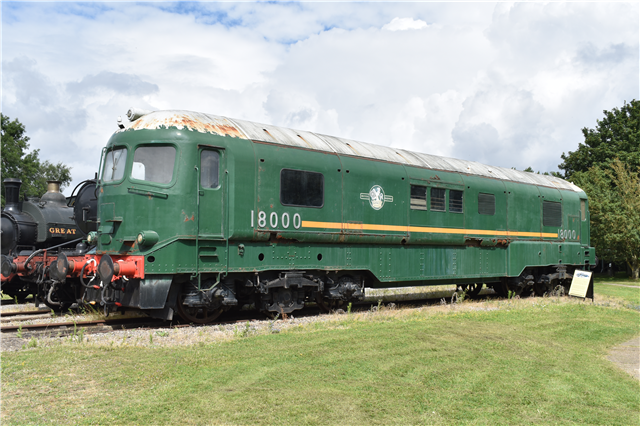British Rail 18000 was a prototype mainline gas turbine-electric locomotive built for British Railways in 1949 by Brown, Boveri & Cie. An earlier gas-turbine locomotive, 18100, had been ordered from Metropolitan-Vickers by the Great Western Railway but construction was delayed due to World War II; a second, 18000, was thus ordered from Switzerland in 1946. It spent its working life on the Western Region of British Railways, operating express passenger services from Paddington station, London.
The GWR chose a gas-turbine locomotive because, at the time, there was no single-unit diesel locomotive of sufficient power available. The King class steam locomotive could deliver about 2,500 horsepower at the rail. The LMS diesel locomotives had engines of only 1,600 hp. After allowing for transmission losses, this would be down to about 1,300 hp at the rail, so two diesels would be needed to match a King.
No. 18000 was of A1A-A1A wheel arrangement, and its gas turbine was rated at 2,500 hp. It had a maximum speed of 90 miles per hour and weighed 117t. It was painted in BR black livery, with a silver stripe around the middle of the body and silver numbers.
The gas turbine was a Brown Boveri industrial machine. It was of a type which would now be called a turboshaft engine but differed from modern free-turbine turboshaft engines in having only one turbine to drive both the compressor and the output shaft. The emphasis was on fuel economy, so it had a heat exchanger (to recover waste heat from the exhaust) and was designed to run on cheap heavy fuel oil. After leaving the heat exchanger, the pre-heated air entered a large, vertical, combustion chamber where the fuel was injected and burned.
18000 was preserved, 18100 was converted to an electric locomotive and then later scrapped.
